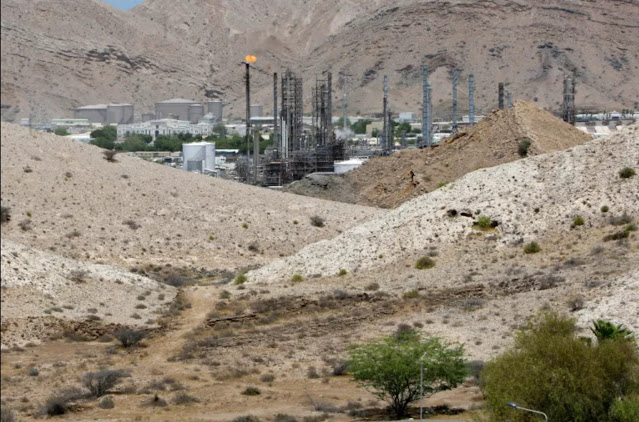The country is using its existing energy infrastructure to fast-track its green transition.
Ahead of the COP28 climate talks in Dubai later this year, the role of oil and gas-producing economies in the clean energy transition is coming into sharp focus.
Ensuring that countries – including those that have relied on oil and gas revenues to support their economic development – can transition to a low-emissions future in an orderly manner is essential to international efforts to limit global warming to 1.5 °C, one of the key goals in the Paris Agreement.
Oman is a clear example of one such country that is setting a bold energy transition vision at home – in line with its international commitments.
Oman’s oil and gas industries account for around 60 percent of its income from exports. In addition to a heavy reliance on revenues from this trade, oil and gas activities – including power generation and industry – are also responsible for the majority of the country’s emissions. Natural gas alone accounts for over 95 percent of electricity generation while iron, steel, aluminium, petrochemicals and refining also contribute significantly to the national emissions footprint.
But the country has prepared itself for change. The government has its sights firmly set on its target of achieving net zero emissions by 2050, which was adopted late last year.
Reducing emissions in Oman’s flagship industries is an important component of the country’s broader decarbonisation agenda. Establishing a path to net zero is an opportunity for Oman to create economic value, improve industrial competitiveness and attract investment to help diversify and strengthen the country’s economy. The government has already committed to ramping up clean energy production in which renewable energy, green and low carbon hydrogen and derivatives will play a starring role.
Beyond fossil fuels, Oman is endowed with significant natural resources such as solar and wind and to some extent, geothermal and tidal energy.
Expanding renewable power generation can bring many positive impacts. These include opportunities to decarbonise domestic industries, making them more competitive, as international markets are set to have more opportunities for the trade of low-emissions industrial products such as steel.
Furthermore, the rapid deployment of renewables will also enable Oman to gradually capture gains from the solar and wind value chains as well as those of other clean energy technologies such as hydrogen and low-emissions synthetic fuels.
Additional renewable power can also support the electrification of a portion of Oman’s oil and gas supply chains, thereby reducing the industries’ emissions intensity.
Oman has already taken steps to lay the groundwork for achieving its ambitions. It has set up an independent entity to oversee its national hydrogen strategy – an important step that demonstrates the country’s commitment and provides the certainty that investment and industry stakeholders will need to support the development of the sector.
If the strategy is implemented in full and on time, renewable hydrogen production could eventually exceed the size of Oman’s current liquefied natural gas (LNG) exports.
But the size of the task is significant: Oman anticipates that cumulative investments would need to reach $140bn through 2050 to achieve the targets set out in its strategy, which utilise only 30 percent of the designated high potential solar and wind land.
To help advance this, Oman’s Ministry of Energy and Minerals has worked with the International Energy Agency to examine in depth both the potential and the challenges of scaling up hydrogen production from renewable electricity in the country.
Oman’s position as an exporter of fossil fuels means that some of the foundations for a renewable hydrogen economy are already in place. Existing infrastructure such as transport networks, industrial ports and gas storage can be used directly or repurposed to support a hydrogen enterprise.
In addition, Oman’s workforce has important skills related to chemical, temperature and fluid engineering, the distribution and handling of fuel, as well as related health and safety expertise. These give the country a significant edge to fulfil its renewable hydrogen ambitions.
Oman currently benefits from a first-mover advantage. According to the IEA’s latest global assessment of announced hydrogen projects, it is on track to become the sixth-largest exporter of hydrogen globally by 2030. It is, with other Gulf producer economies – such as Kuwait, Qatar, the United Arab Emirates and Saudi Arabia – among the frontrunners who can help to support an orderly transition to a low-emissions global energy economy.
As Oman moves forward on its energy transition journey, it is poised to become a significant player in renewable energy and a model for other nations.
By harnessing its natural resources, its established trade links and its longstanding reputation as a trusted energy partner, Oman has a strong point of departure, not only for securing its economic and energy future but also to be one of the leading oil and gas-producing economies in the fight against climate change.



0 Comments